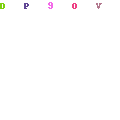Ø Head protection—safety helmet made up
of PVC or HDPE. (High Density Poly Ethylene)
· Capable of withstand700 kg of weight.
· DGMS approval is important.
· DGMD—director general of mines
safety.
Ø Face protection—face shield made up
of mica is used in areas like chemical handling labs , acid/alkali handling
areas etc.,
Ø Eye protection—goggles ,
welding/cutting goggle, grinding goggle, panorama type goggle, spectacle type
goggle etc.,
Ø Ear protection—TLV of noise is 85 db
according to Indian Factories Act and 80 db according to OSHA.
Ø Nose/mouth protection—face mask,
canister mask, cup mask are used for gas fumes, smokes filled areas.
Ø Hand protection—gloves made up of
leather (For grinding/cutting/welding)
· PVC—for chemical handling
· Asbestos—for hot areas
· Thin rubber—for chemical labs
· Nitryl—for hot chemicals
· Kevlar—for works related to cutting
Ø Chest / stomach protection—aprons are
used made up of leather, PVC, Asbestos, Cotton, Rubber.
Ø Leg/Knee protection—anklets are used
for heavy load carrying workers.
· Safety shoe—it contains a steel cap
at the toe end and a thin steel plate at the bottom.
· Do not use in electrical areas.
Ø Fall
protection—safety harness belt with dual life lines.






















